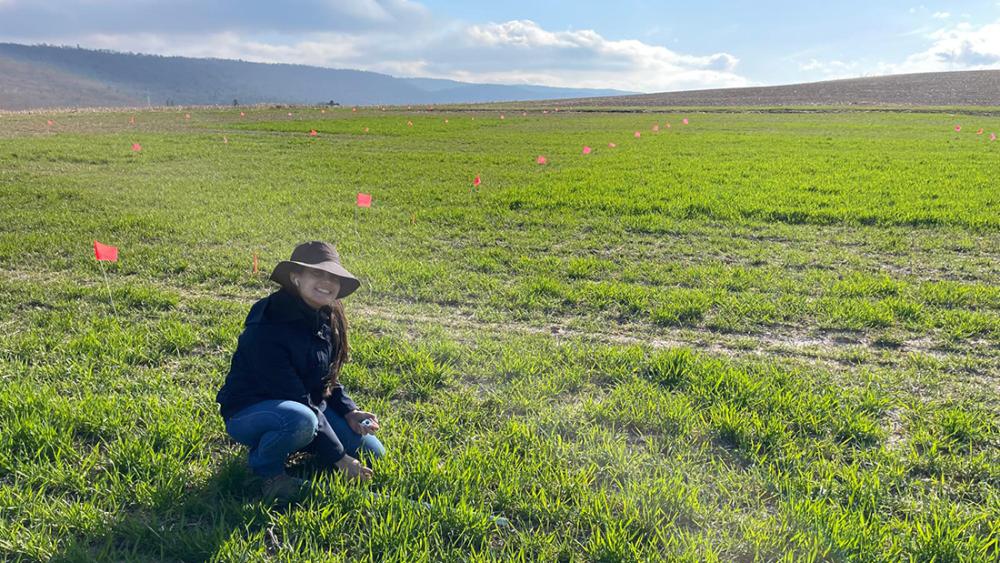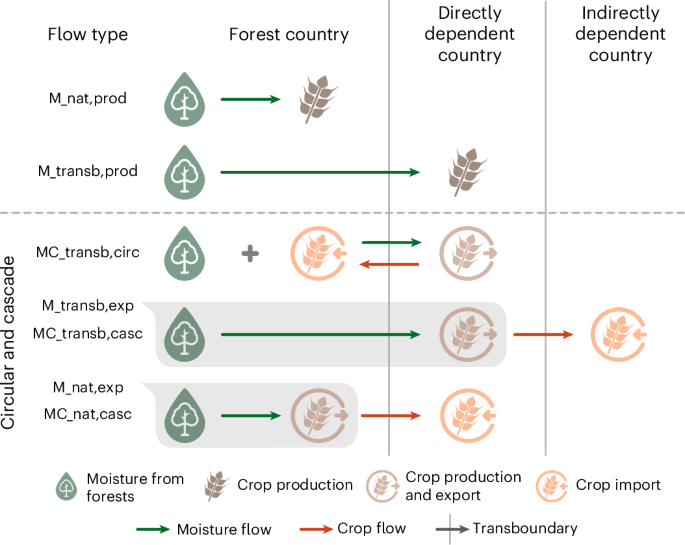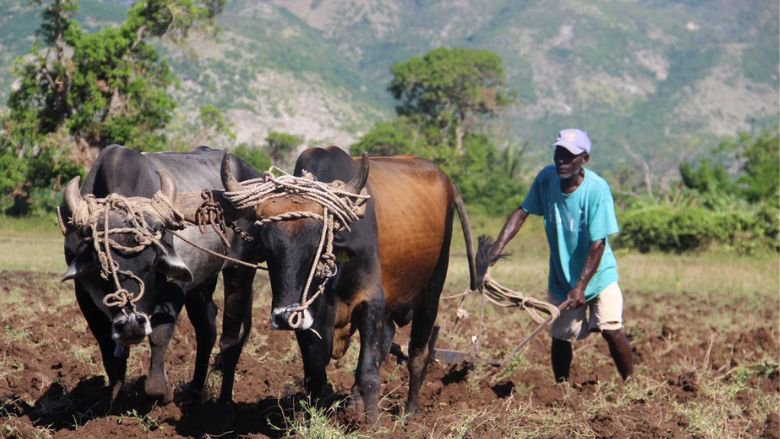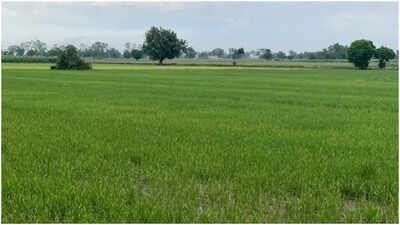Report on the Effects of Plant Growth Regulators on Winter Wheat Production
A Study in Sustainable Agricultural Intensification
A research initiative at Penn State University investigated the impacts of the plant growth regulator trinexapac-ethyl and nitrogen fertilizer application on winter wheat crops. The study provides critical data for advancing sustainable agricultural practices, directly addressing key United Nations Sustainable Development Goals (SDGs), including SDG 2 (Zero Hunger) and SDG 12 (Responsible Consumption and Production).
Research Objectives and Alignment with SDGs
The primary objective was to assess the trade-offs associated with using a plant growth regulator to prevent crop “lodging” (the bending over of stems), a phenomenon that can severely impact grain yields. This research is vital for creating resilient agricultural systems that support global food security.
Core Research Questions
- How does trinexapac-ethyl affect straw yield and quality, a crucial resource for animal bedding on mixed-use farms?
- What is the combined effect of the growth regulator and varying nitrogen fertilizer rates on overall crop productivity?
Contribution to Sustainable Development Goals
- SDG 2 (Zero Hunger): By investigating methods to secure grain yields and enhance the nutritional value (protein content) of crops, this study contributes to achieving food security and promoting sustainable agriculture.
- SDG 12 (Responsible Consumption and Production): The research promotes the efficient use of agricultural inputs (fertilizers, growth regulators) and supports circular economy principles by evaluating the dual use of wheat for both grain and straw, thereby minimizing waste and maximizing resource value.
Methodology
The study was conducted over a two-year period through field trials at Penn State’s Russell E. Larson Agricultural Research Center. Researchers implemented a structured experimental design to ensure robust and applicable results.
Experimental Design
- Treatments: Nine distinct combinations of treatments were tested.
- Variables:
- Nitrogen fertilizer applied at three different rates.
- Trinexapac-ethyl applied at three different levels (no application, single application, double application).
Key Findings and Analysis
The results offer a nuanced understanding of the effects of trinexapac-ethyl on dual-purpose winter wheat crops.
Effects on Straw Yield and Quality
- Plant Height: Application of trinexapac-ethyl successfully reduced plant height as intended.
- Straw Yield: A slight, statistically insignificant reduction in straw yield was observed, with a 5% decrease for a single application and an 8% decrease for a double application.
- Straw Quality: Critically, the regulator had no negative impact on straw quality or its absorbency, confirming its continued viability for use as animal bedding. This finding is essential for maintaining the circular economic model on poultry farms.
Effects on Grain Yield and Quality
- Lodging Prevention: While no lodging occurred during the trial, the use of the regulator is a known preventative measure that secures grain yields against this risk, directly supporting SDG 2 targets for stable food production.
- Grain Protein: Increased application of nitrogen fertilizer resulted in higher grain protein content, enhancing the nutritional quality of the feed produced.
Conclusion: Informing Sustainable Farm Management
The study concludes that trinexapac-ethyl is an effective tool for mitigating lodging risk without compromising the essential quality of straw for secondary uses. However, producers must consider a slight trade-off in straw yield.
Implications for Sustainable Agriculture
- Informed Decision-Making: Farmers can use this data to weigh the economic and operational benefits of reduced lodging risk against a potential minor loss in straw volume.
- Resource Efficiency: The findings encourage a more precise and responsible application of agricultural inputs, aligning with the principles of SDG 12. By understanding the specific outcomes of these inputs, farmers can optimize production patterns for greater sustainability.
Analysis of Sustainable Development Goals in the Article
1. Which SDGs are addressed or connected to the issues highlighted in the article?
- SDG 2: Zero Hunger: The article directly addresses agricultural practices aimed at improving food production. The research focuses on increasing the yield of winter wheat, a key grain used for animal feed, which is integral to the food supply chain. The study’s goal of mitigating “lodging” to prevent grain yield reduction directly supports food security.
- SDG 9: Industry, Innovation, and Infrastructure: The article highlights scientific research and innovation within the agricultural sector. The study conducted by Penn State researchers, funded by both public (USDA) and private (Syngenta) entities, represents an effort to enhance scientific research (Target 9.5) to improve agricultural productivity and create more resilient farming practices.
- SDG 12: Responsible Consumption and Production: The research explores the efficient use of resources in agriculture. By evaluating the trade-offs between using a growth regulator (trinexapac-ethyl) and nitrogen fertilizer to optimize both grain and straw yields, the study addresses the sustainable management and efficient use of chemical inputs in food production systems.
2. What specific targets under those SDGs can be identified based on the article’s content?
- Target 2.4 (under SDG 2): “By 2030, ensure sustainable food production systems and implement resilient agricultural practices that increase productivity and production…” The research is a direct attempt to implement a resilient agricultural practice by using growth regulators to prevent lodging, a phenomenon that “can greatly reduce grain yields.” The study aims to make wheat production more sustainable and productive by understanding the effects of these inputs.
- Target 9.5 (under SDG 9): “Enhance scientific research, upgrade the technological capabilities of industrial sectors in all countries…” The article is a clear example of this target in action. It describes a scientific study conducted at a university research center, funded by agricultural industry and government bodies, and published in a scientific journal (“Crop, Forage and Turfgrass Management”) to advance knowledge and technology in grain crop production.
- Target 12.2 (under SDG 12): “By 2030, achieve the sustainable management and efficient use of natural resources.” The study investigates how to efficiently use inputs like nitrogen fertilizer and growth regulators. It provides farmers with information to make decisions about the trade-offs, such as how trinexapac-ethyl “might slightly cut straw yield” while potentially securing grain yield, promoting more efficient resource management on farms.
3. Are there any indicators mentioned or implied in the article that can be used to measure progress towards the identified targets?
- Grain Yield: This is a primary indicator for Target 2.4. The article explicitly states that the purpose of the growth regulator is to prevent lodging, which “can greatly reduce grain yields,” and that the study confirmed the regulator “doesn’t harm… grain yield.”
- Straw Yield: This is another key productivity indicator (Target 2.4). The study measured this outcome precisely, finding “8% lower straw yield with two trinexapac-ethyl applications and 5% lower straw yield with a single trinexapac-ethyl application.”
- Grain Protein Content: This is an indicator of food quality and efficient nutrient use (Targets 2.4 and 12.2). The article notes that “adding more nitrogen fertilizer resulted in higher grain protein content.”
- Rate of Input Application: This serves as an indicator for Target 12.2 on efficient resource use. The study was designed around testing “nine combinations of three nitrogen fertilizer amounts and three trinexapac-ethyl treatments,” directly measuring the application rates of these resources.
- Investment in Research and Development: This is an indicator for Target 9.5. The article implicitly measures this by stating, “The research was funded by Syngenta and the U.S. Department of Agriculture’s National Institute of Food and Agriculture,” showing public and private investment in agricultural innovation.
4. Summary Table of SDGs, Targets, and Indicators
| SDGs | Targets | Indicators |
|---|---|---|
| SDG 2: Zero Hunger | 2.4: Ensure sustainable food production systems and implement resilient agricultural practices that increase productivity. |
|
| SDG 9: Industry, Innovation, and Infrastructure | 9.5: Enhance scientific research and upgrade technological capabilities. |
|
| SDG 12: Responsible Consumption and Production | 12.2: Achieve the sustainable management and efficient use of natural resources. |
|
Source: psu.edu







